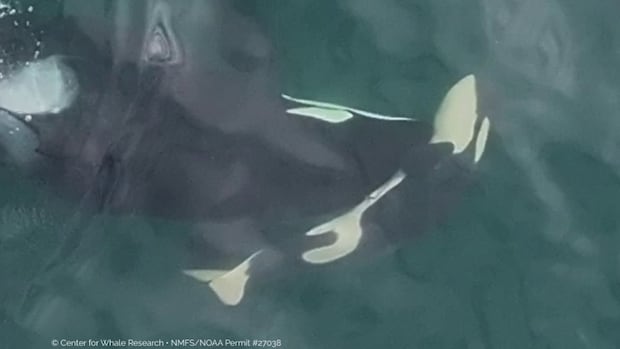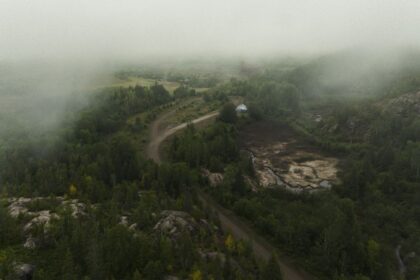British ColumbiaWhale researchers say that an endangered southern resident killer whale was found pushing a deceased calf in the Rosario Strait, Wash., on Friday.Center for Whale Research said that southern resident killer whale was found pushing calf in Washington stateCBC News · Posted: Sep 13, 2025 8:03 PM EDT | Last Updated: 3 hours agoIn this image posted to social media, the orca named J36 is seen pushing a dead calf in the Salish Sea. (Center for Whale Research, NMFS/NOAA Permit #27038)Whale researchers say that an endangered southern resident killer whale was found pushing a deceased calf in the Salish Sea on Friday.For some, the sighting may stir memories of another mother whale that behaved similarly in 2018, making headlines worldwide.In a social media post about the latest incident, the Washington-state based Center for Whale Research (CWR) said that they had been alerted to sightings of the orca — named J36 — in Rosario Strait, located in Washington around 45 kilometres northeast of Victoria.The CWR says researchers found J36 pushing a dead female calf on Friday afternoon, with an umbilical cord still attached. The baby whale itself was likely born within the preceding three days, they say.”Based on the size of the calf, we estimate that the calf was either full-term or near full-term,” the organization’s social media post reads.”It is unclear if this was a stillbirth or if the calf died shortly after birth.”Michael Weiss, research director for CWR, said in emailed statement that researchers cannot assign any individual death to a particular factor in the ecosystem. But Weiss said that “low reproductive success in this population” is tied to high levels of pollutants — particularly industrial chemicals known as PCBs — that inhibit immune and reproductive function, as well as a lack of prey, especially Chinook salmon, which are orcas’ preferred prey.Researchers have previously said the behaviour where an orca pushes a dead calf is an apparent act of grief.J35, another female orca in the J pod, pushed the remains of her calf for 17 days in 2018, covering for more than 1,600 kilometres of the sea in what scientists called “a tour of grief.”Then, in early 2025, she was again spotted pushing another dead calf.There are less than 75 southern resident killer whales remaining. They are a genetically distinct group of orcas that frequent the Salish Sea near Vancouver Island and Metro Vancouver, and feed on salmon.J36 belongs to the “J pod,” a group of southern resident killer whales. Members of the pod are named starting with the letter “J” and a number.The CWR said that researchers were on the scene Friday collecting more information on J36 and her dead baby, and they would provide more information when available.A report from earlier this year stated that the southern resident killer whales faced extinction if Ottawa didn’t urgently step up conservation measures.In this Jan. 18, 2014, photo, an endangered female orca leaps from the water while breaching in Puget Sound west of Seattle, as seen from a federal research vessel that had been tracking the whales. (Elaine Thompson/The Canadian Press)With files from The Canadian Press
Another endangered female orca found pushing dead baby calf through Salish Sea











